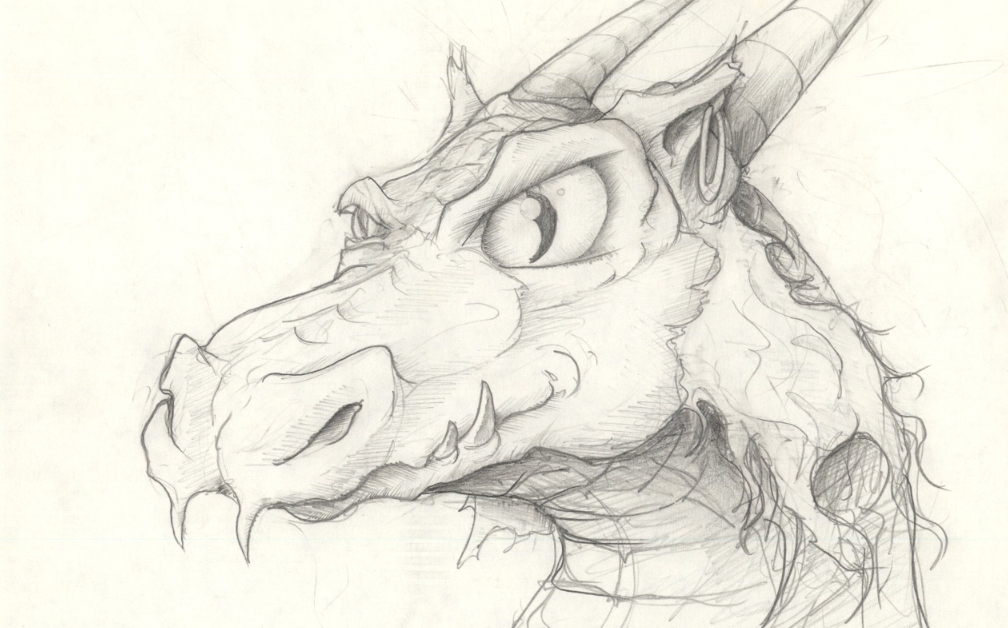
Craig Stitt art and design papers, STITT. Video Game History Foundation Library.
The Video Game History Foundation has released a new collection that will be of particular interest to dragon game lovers: the Craig Stitt art and design papers. Craig Stitt is an artist and former game designer with credentials to his name ranging from Sonic the Hedgehog 2 with Sega to Ratchet and Clank with Insomniac. And of course, in the middle of those years came a little game with a familiar purple dragon protagonist. Craig has generously provided his portfolio to the VGHF for digitization and preservation, which includes a good number of documents relating to Spyro the Dragon, including extensive early design documents and pitches for early dragon game ideas before the game became what we know and love today.
According to Craig’s design papers, the first pitches to Insomniac for a dragon game were for an idea titled Lifespan. The idea was to follow a dragon’s life throughout human history, growing larger and more powerful over centuries while fighting off more and more technologically advanced human civilizations. Gameplay could have ended up as a mix of first-person-shooter sections and flight sim sections. Even a two player hunter versus hunted mode was thrown around. There’s a lot of great dragon game concepts here, such as your abilities changing as you age, the amount of gold you amass increasing your magical power, and having to capture enemy princesses/presidents/etc. and bring them back to your lair.
Eventually this idea shifted under a new title – Dragonspan/Dragon Span, with more dragon-centric story ideas fleshed out, like a “Circle of Dragons” that possibly acted as protectors of the human race while encouraging the growth of dragons to immortality. More varied gameplay ideas are thrown in, many of which show up in some way in the Spyro series, like rescuing young dragons or eggs, different elemental breath attacks, and swimming levels. There’s a mention of a couple interesting bonus rounds including racing and some sort of “mating challenge” where you could either impress female dragons or fight other males.
And still the premise of the game evolved, with ideas such as the player character actually being a young wizard apprentice, or some other type of creature, transformed into a dragon. The wizard apprentice idea seems to have made it further with several pages dedicated to this pitch.
Eventually, once the full pitch was brought to Universal, Mark Cerny suggested keeping the focus on a dragon at a specific age (to make sequels easier) and to keep it family friendly in anticipation of the PlayStation’s primary user base skewing younger by the time of the game’s release – as Craig explains in a special episode of the Video Game History Hour podcast.
There’s a ton of interesting stuff to be found in this collection. Particularly, I found it cool to see what early fragments of ideas carried over into the final Spyro games, like the prevalence of wizards, using sheep as health, and even the thought of enjoying your hoard at the end of the game (well, Gnasty Gnorc’s hoard, once you 100% complete the first game). Also of particular interest is how certain verbiage shows Craig/Insomniac were thinking about the use of a dragon as the protagonist. They specify needing an emphasis on expressive dragon animations and sense of flight and mass. Amusingly, under a “How do we differentiate ourselves” question, simply the word “Dragon” is one of the replies; obviously even back then we knew playing as a dragon would be cool. There’s a thought scribbled in the margin of one page about letting players customize their dragon color which is a highly sought after feature in dragon games today.
These early design documents are a fascinating glimpse into the pre-history of a beloved franchise. While all of these ideas likely never would have made it into a single game, the overall pitch sounds like a game I’d still like to play today. If Insomniac had produced a project more in-line with these initial ideas, I have to wonder where it would end up falling in the pantheon of legendary dragon games.
Thanks so much to Craig Stitt for sharing these files, and thanks to the Video Game History Foundation for making such interesting material available to the public. I’m hoping that this helps inspire some new dragon game project ideas. After all, there’s a lot of genres out there other than open world multiplayer survival games!
